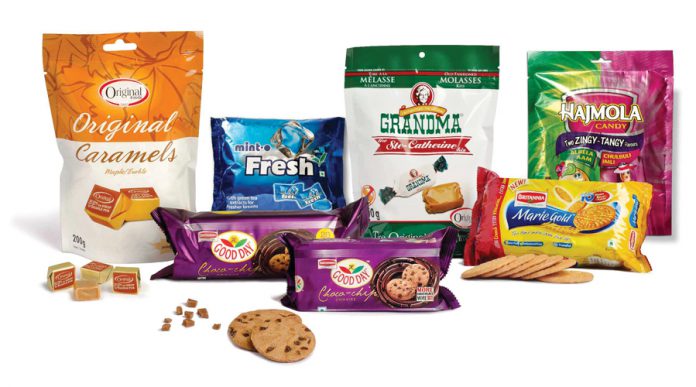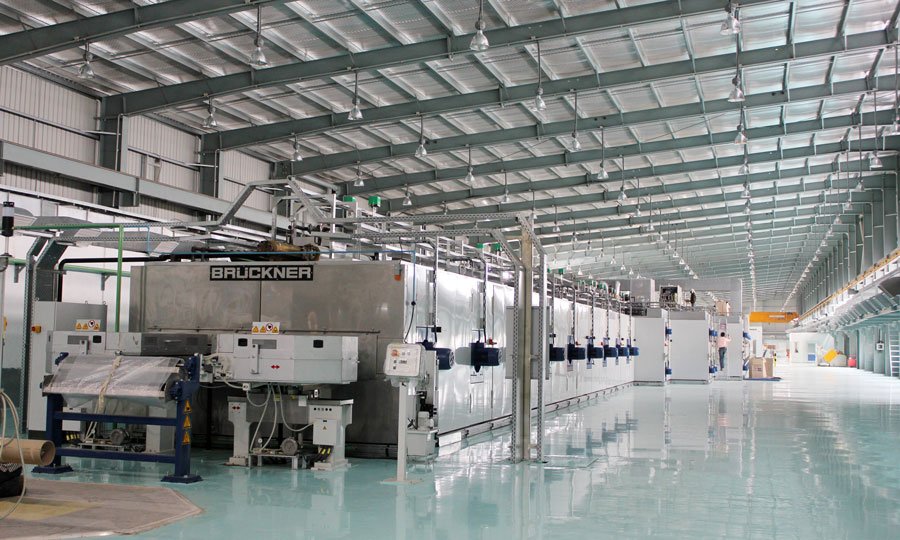
Alongside the rapid growth of the flexible packaging printing and converting industry in India and South Asia, a great deal of investment is also being made to increase packaging film manufacturing capacities. Whereas the top dozen or so manufacturers of polyester, BOPP, BOPET packaging films have a current capacity of approximately 1.5 million tonnes at least six of these companies are expected to add new lines for either polyester or BOPP films in the next two years. Another feature of capacity enhancement is the addition of new metallizing and coating lines for the manufacturer of value added and speciality packaging films.
Other packaging film manufacturers are also evaluating the demand for specific materials and in specific regions both in the country and regionally, since several Indian packaging film manufacturers now have lines installed overseas. We recount some of the expansion plans of the leading Indian manufacturers of packaging films below.
Jindal Poly Films to add 161,000 tonnes BOPP capacity
The largest Indian manufacturer of packaging films Jindal Poly Films is investing Rs. 1,000 crore (approximately US$ 150 million) for its capacity expansion both within the country and overseas. According to the company’s press release in November 2015, “The company has drawn up future expansion plans for its India operation and for its subsidiaries in USA and Europe totalling to Rs 1,000 crores.” We believe that roughly half of the new capacity will be installed in India while the rest will go to Jindal Poly’s overseas plants.
At Nashik in Maharashtra, Jindal Poly Films operates the world’s single largest plant for production of BOPET and BOPP films with additional plants in the US and Europe some of which are part of its acquisition of the global BOPP films business of ExxonMobil Chemical in 2013. Jindal Poly Films’ current BOPP capacity is 445,000 tonnes annually while its annual BOPET capacity is 127,000 tonnes for a combined film capacity of 572,000 tonnes.
Jindal Poly Films will increase its annual BOPP capacity by 161,000 tonnes to reach an annual global capacity of 606,000 tonnes while its overall capacity including BOPET will rise to 733,000 tonnes. The capacity expansion comprises four BOPP production lines, metallizers, coating lines along with the required ancillary equipment. The new capacities are expected to be operational over the next two years, with two of the lines to be installed in India.
Cosmo Films to add 60,000 tonne BOPP line in Karjan
As we wrote in our November 2015 issue, Cosmo Films has announced its plans to install a new 10.4-metre wide BOPP line in Karjan near Vadodara in Gujarat in early 2017 with an investment of approximately Rs. 200 crore. In addition a cast polypropylene line is being added to Cosmo’s Maharashtra plant at a cost of Rs. 20 crore. The new BOPP 60,000 metric tonne expansion at Karjan will increase the company’s annual BOPP production capacity from 136,000 to 196,000 metric tonnes.

Cosmo and Brückner are looking forward to an exciting new challenge – India’s very first 10.4 metre wide film production line. Photo Brückner
The 10.4 metre wide Bruckner BOPP line to be installed at Karjan is an advanced high speed line equipped with automated changeovers that increase power savings and maximize overall operational efficiencies. “The output is intended for both domestic and export markets . . . It is the highest tonnage line available as of date. We have brought in many features to keep the variable costs for operating this line really low,” Pankaj Poddar, CEO, Cosmo Films stated to Packaging South Asia. Cosmo has five BOPP lines in its Waluj plant in Aurangabad and one BOPP line at Shendra in Aurangabad. Altogether including the two lines in Karjan, the company presently has eight BOPP lines in addition to plants in Choognam in Korea and Hagerstown, USA for producing thermal films.
Poddar stated, “We are anticipating strong demand for BOPP packaging films in the coming years, especially from the FMCG sector which prompts us to expand our BOPP production capacity.”
According to Poddar, BOPP is a versatile and cost efficient material for flexible packaging, “Its properties can be changed in several ways which you cannot do with other kinds of films.”
Surat Metallics’ 32,000 tonne PET line
In another instance of packaging film capacity expansion, Surat Metallics is adding a polyester line with an annual capacity of 36,000 tonnes to be commissioned in the 2016-17 financial year. Surat Metallics’ current annual capacity includes 32,000 metric tonne capacity of PET films produced on a 8.7 metre wide Bruckner line that was added in 2012.
SRF
SRF, a manufacturer of chemical-based industrial intermediates, is investing Rs. 394 crore on three projects to expand its packaging film capacity, the setting up of a new pharmaceutical grade manufacturing and filling plant and for modifications of its refrigerant plant.
SRF will set up its new greenfield packaging film line in a new domestic tariff area location near its Indore SEZ plant at an estimated cost of Rs. 356 crore (approximately US$ 55 million). SRF currently manufactures packaging films at plants in Indore in Madhya Pradesh and Kashipur in Uttarakhand. With an annual installed capacity of 71,000 tonnes it is also emerging as one of the medium-sized manufacturers of BOPP and BOPET packaging films in the country.
Chiripal Poly Films
Chiripal Poly Films is a manufacturer of BOPP packaging films with one of the most ambitious expansion plans that includes the establishment of new lines in three consecutive years – 2015, 2016, and 2017. It installed a 40,000 tonne BOPET line in 2015 and has plans to install another 40,000 tonnes per annum BOPET in December 2016; and, yet one more BOPP line in December 2017, this time with a capacity of 45,000 tonnes per annum. The successful execution of these expansion plans should take Chiripal’s total capacity to just over 200,000 tonnes including 123,000 tonnes of BOPP packaging films. The company has also become a manufacturer of PET resins to the tune of 220,000 tonnes annually.
Vacmet India
Vacmet based in Chatta near Mahtura in North India already has an annual capacity of nearly 100,000 of BOPET and BOPP packaging films. Vacmet is planning to add a 40,000 tonne capacity BOPP line in the 2016-17 time frame.
Max Speciality Films
Amongst the companies that have made public statements regarding expansion are Max Speciality Films which already has BOPP film lines, metallizers and thermal coating lines with a total capacity of 54,000 tonnes which it supplies to the food and non-food packaging and industrial market segments. In August 2015, its CEO Jaideep Wadhwa stated to the trade press, “Since our current capacity is fully utilized, we are currently evaluating the Indian and other key manufacturing bases globally to assess the viability and appropriate timing for capacity expansion.” Apparently the company has invested in research and development and a strong product application and development team to create a technology roadmap. Max Speciality Films was also one of the two Indian packaging film manufacturers along with Jindal Polyfilms that took part in the Labelexpo fair in Brussels in October 2015.
Stronger demand for BOPP
Overall there seems to be a clear anticipation of stronger demand for BOPP packaging films which to some extent also require higher quality gravure and wide web CI flexo presses that are able to handle this material. Thus there is an overall trend of improvement in flexible packaging quality and efficiencies in production. Film-based labels, both pressure sensitive and unsupported wraparound labels, are also contributing to the growth in consumption of packaging films.
Overall what is expected over the next two years is an increase in Indian film manufacturing annual capacity of anywhere from 250,000 to 300,000 tonnes. In addition there are lines coming up in Bangladesh and Pakistan.
Industry experts in India say that BOPP packaging film consumption in the country is growing at 10 to 12% annually while the overall flexible packaging industry is growing at a slightly higher rate. Nevertheless, of the film manufacturing capacity expansion in India in the next two years, a significant portion (more than 40%) consists of polyester or BOPET lines.







